Best of India Tours
- Golden Triangle Tour- Best of India & Nepal
- Classical Rajasthan
India Cultural Tours
- Images of North India- Karnataka Heritage
- Rajasthan & Goa Tour
Discover India Tours
- Grand India Tour- North to South India
- Central to South India
Rajasthan Tours
- Classical Rajasthan Tour- Golden Triangle Tour
- Grand Mughal Tour
India Luxury Trains
- Palace on Wheels- The Golden Chariot
- India Deccan Odyssey
- The Indian Maharaja
- Royal Rajasthan on Wheels
Nepal Tours
- Glimpses of Nepal- Buddhist Pilgrimage
- Nepal River Rafting
- Destinations of Nepal
- Nepal General Info
India Wildlife Tours
- North India Wild Life- South India Wildlife
Tibet Tours
- Tibet Monastery Tours- Explore Tibet
- Destinations of Tibet
Spa & Yoga Tours
- Ananda in Himalayas- Yoga & Meditation
Adventure Tours
- Manali Safari Tour- Himalayan Trekking
- Horse Safari
Leh - Ladakh
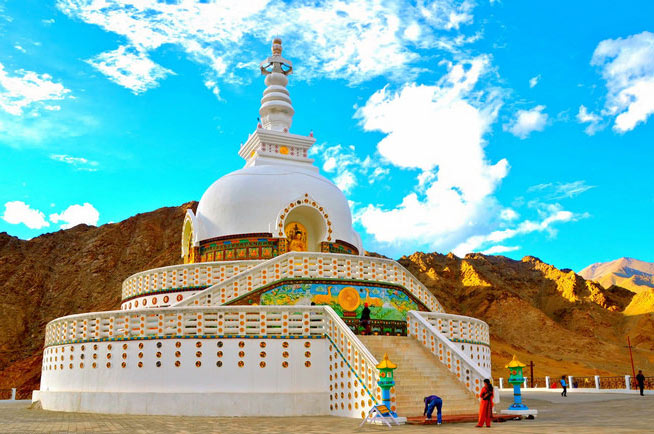
Ladakh is a land abounding in awesome physical features, set in an enormous and spectacular environment. Bounded by two of the world's mightiest mountain ranges, the Karakoram in the north and the Great Himalaya in the south, it is traversed by two other parallel chains, the Ladakh Range and the Zanskar Range. Today a high-altitude desert, sheltered from the rain-bearing clouds of the Indian monsoon by the barrier of the Great Himalaya, Ladakh was once covered by an extensive lake system, the vestiges of which still exist on its south-east plateaux of Rupshu and Chushul, in the drainage basins or lakes of Tso-moriri, Tso-kar and Pangong-tso. But the main source of water is winter snowfall.
Sightseeing
Sightseeing of the historic monuments and major Buddhist gompas (monasteries) are the main attractions of Ladakh. the capital, since the building of its nine-storey Leh Palace in the early 17th century. A few kilometres up the Indus is Shey Palace, the most ancient capital, with its palace and temples. Down river, Basgo, right on the road, and Tingmosgang, a short distance up a side-valley, both served as royal capitals when the Old Kingdom was temporarily divided into two parts in the 15th century. Both these places have the remains of forts and temples dating from the period of their brief glory. Just across the river from Leh lies Stok, the village with which the deposed royal family was compensated for the loss of the throne. Stok Palace, where the royal family now lives, houses a museum of artefacts associated with the dynasty
Excursions
Leh offers many excursion such as Hemis Monastery which is one of the largest and famous monasteries belonging to Dukpa Order. Likir Monastery belongs to Gelukspa Order is a worth seeing monastery. Lamayuru Monastery belongs to Drigunp a order of Tibetan Buddhism.
Excursions for Leh - Ladakh
Shey Palace
This has been the Royal Palace since the King was dethroned by the Dogras and is now the home of the last king\'s widow. It is around 12 kms from Leh. There is an interesting museum that contains an odd collection of exhibits including the King\'s teacup holder, the queen\'s turquoise headdress, and many more interesting things.
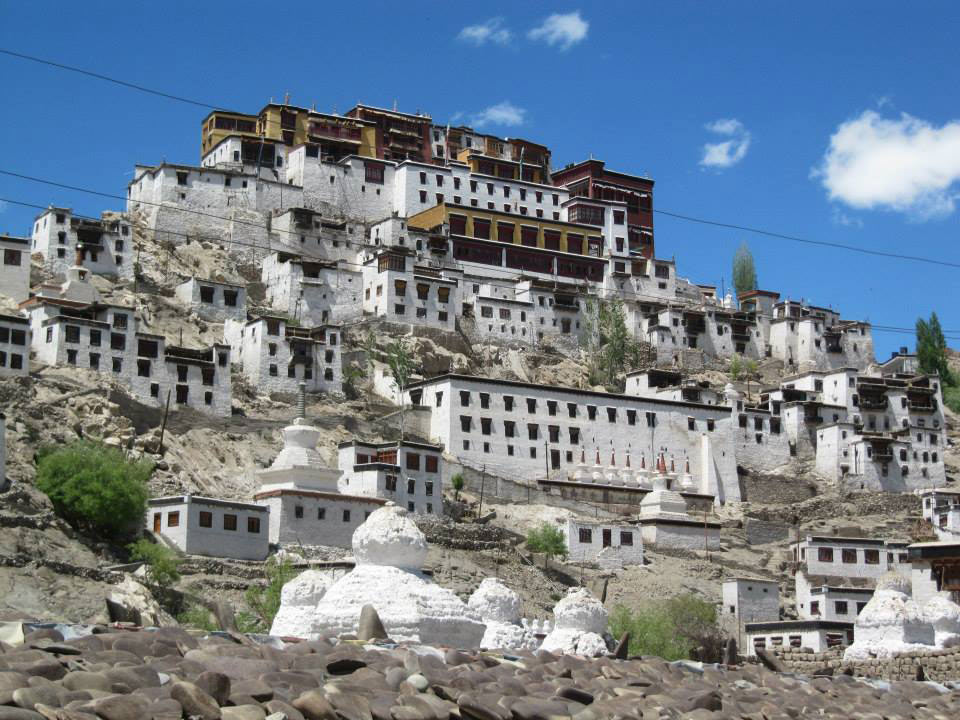
Thiksey Monastery
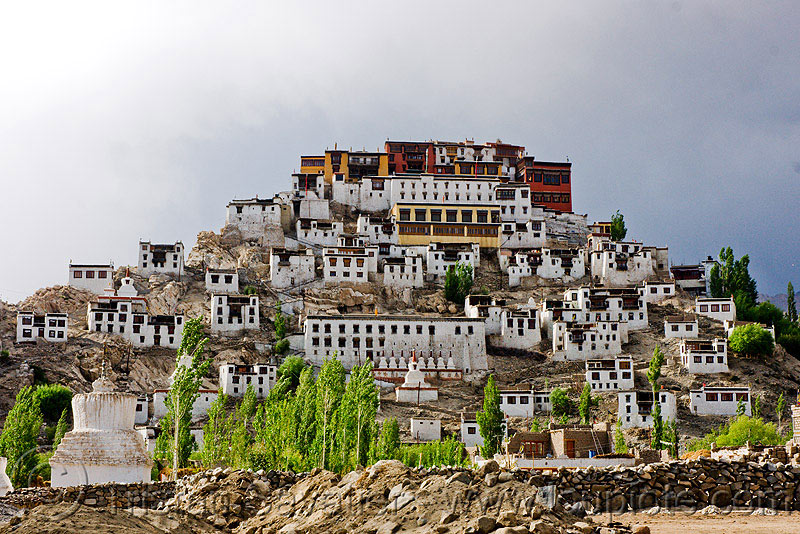
In south of Leh the most beautiful of all the monasteries in Ladakh belongs to Gelukspa Order. Around 80 monks reside here at present. Thiksey festival is held in the month of October-November. Leh Adventure Tours, Pangong Lake in Ladakh, Leh-Ladakh Tours, Travel to Leh.
RI – Dzong
Ri-dzong, situated a few kilometres up a side-valley from Uley-Tokpo, was founded only a century and a quarter ago by a devout layman-turned-lama, with the purpose of following the strict monastic rules of the Gelugs-pa sect.
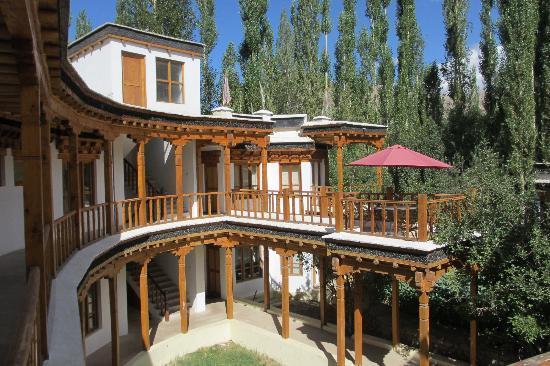
Hemis Monastery
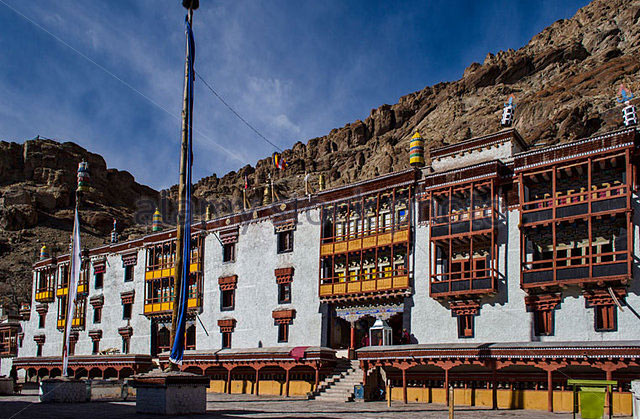
Hemis monastery is around 45 kms south of Leh, and is one of the largest and most famous monasteries belonging to Dukpa Order. The Hemis festival is held in the month of June. This festival is a very famous one attracting people from far off places.
Lamayuru Monastery
Around 125 kms west of Leh, you pass through several villages on the way with scenic beauty especially the Moon land type features. In Lamayuru, there is a monastery too, which belongs to Drigunp a Order of Tibetan Buddhism. The monastery is remarkably built on a rock.

Likir Monastery
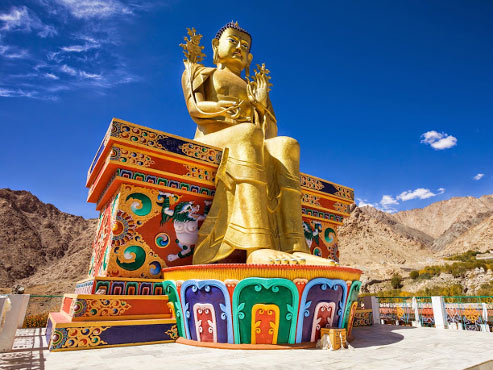
The Likir monastery is around 53 kms west of Leh, which belongs to Gelukspa Order. This is also worth seeing. Likir festival takes place on the 28th & 29th of the 12th month of Tibetan Calendar .
Fact File
 Area: 380 sq. km
Area: 380 sq. km
 Population: (1991) 192967
Population: (1991) 192967
 Altitude:5205 m above sea level
Altitude:5205 m above sea level
 Best Time to Visit:April – September
Best Time to Visit:April – September
 Languages:Hindi, English, Ladhaki and Urdu
Languages:Hindi, English, Ladhaki and Urdu
 STD Code:01982
STD Code:01982




